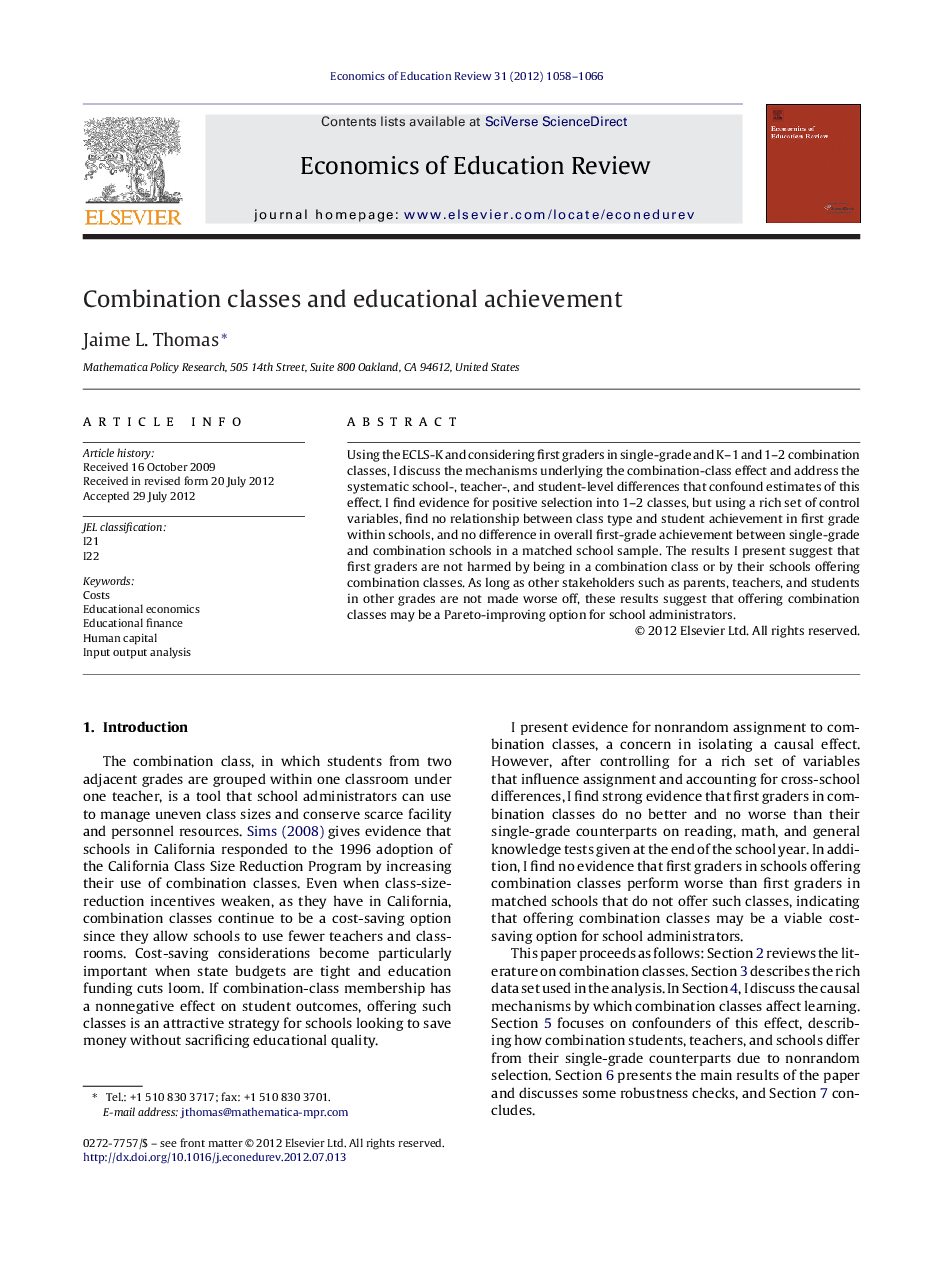| Article ID | Journal | Published Year | Pages | File Type |
|---|---|---|---|---|
| 354397 | Economics of Education Review | 2012 | 9 Pages |
Using the ECLS-K and considering first graders in single-grade and K–1 and 1–2 combination classes, I discuss the mechanisms underlying the combination-class effect and address the systematic school-, teacher-, and student-level differences that confound estimates of this effect. I find evidence for positive selection into 1–2 classes, but using a rich set of control variables, find no relationship between class type and student achievement in first grade within schools, and no difference in overall first-grade achievement between single-grade and combination schools in a matched school sample. The results I present suggest that first graders are not harmed by being in a combination class or by their schools offering combination classes. As long as other stakeholders such as parents, teachers, and students in other grades are not made worse off, these results suggest that offering combination classes may be a Pareto-improving option for school administrators.
► I consider first graders in single-grade and K–1 and 1–2 combination classes. ► I discuss the mechanisms of the combination-class effect and address confounders. ► I find evidence of cross-school differences and positive selection of 1–2 students. ► I use rich controls and account for cross-school differences. ► I find no relationship between class type and test scores.
